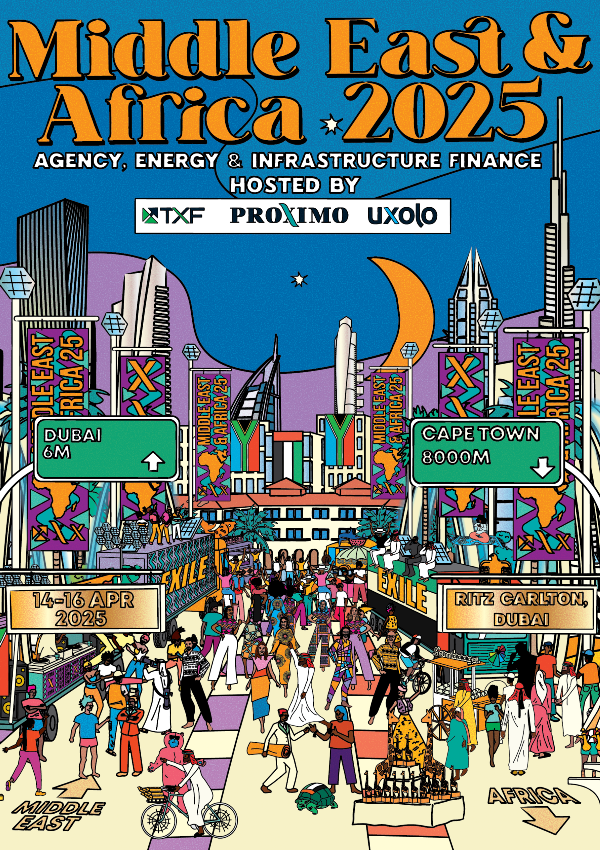OCTP: Vitol uses pricing clout for a rare long-term borrowing
A key project for Ghana and a direct lending first for UKEF – Vitol’s OCTP is rumoured to be tightly priced and partially financed under a fixed rate CIRR.

Vitol has raised a rare, and possibly its first, borrowing in the ECA-backed project debt market - a $1.35 billion 10- and 12-year multi-sourced facility to finance its share in the $7.9 billion Offshore Cape Three Points (OCTP) oil and gas project.
A repeat borrower of cheap one- and three-year revolving credit facilities (RCF) to fund its commodity trading operations, Vitol’s move to long tenor non-recourse debt for OCTP negates refinancing risk on the project. However, given Vitol is a darling of the syndicated loan market - its recent $8 billion revolver was hugely oversubscribed and priced at a shave under 50bp over Libor on the three-year tranche and less than 40bp on the one-year – refinancing risk is, arguably, not the issue it would be for lesser credits. Consequently, the deal must also have been keenly priced for the borrower to go long-term rather than the RCF or cash routes available to it.
Structured via a bankruptcy remote borrowing vehicle – Vitol Upstream Ghana Limited – the $1.35 billion debt comprises five tranches: a $470 million 10-year reserves-based commercial bank loan; an $80 million 12-year MIGA-covered commercial bank loan; a $310 million 12-year UKEF direct loan and a $90 million UKEF covered buyer’s credit; and a 12-year $300 million IFC facility split between a $265 million A loan and $65 million in debt from its managed co-lending portfolio programme.
Lenders to the commercial bank reserves-based and covered tranches are Standard Chartered (also financial advisor to the borrower),Societe Generale, HSBC, ING Belgium, Bank of China, Natixis, Mizuho Bank and BTMU. All tranches rank pari passu and are backed by a Vitol debt service undertaking at the parent company level. Legal counsel for the deal was provided by Herbert Smith Freehills for the borrower and Milbank for the lenders.
Pricing details are sketchy. The UKEF direct loan is a fixed rate CIRR facility and at time of signing on 14 December 2016 the CIRR dollar rate for 8.5-year-plus borrowing was 2.93%. Financing for the covered tranches and the IFC direct loan will also have been competitive, but the uncovered reserves-based facility is also said to have come in tightly priced – starting in the low 300bp region and rising in steps to the low 500bp area – on the back of Vitol leveraging its bank relationships: Excluding Bank of China and Natixis, all the commercial banks on OCTP were also MLAs or bookrunners on Vitol’s $8 billion revolver in October 2016.
The Vitol fundraising is just one part of the $7.9 billion OCTP project – the largest foreign direct investment into Ghana to date. A joint venture between Eni Ghana Exploration and Production (44.5%), which is also field operator, Vitol Ghana Upstream (35.5%) and Ghana National Petroleum Corporation (GNPC-20%), the development comprises two oil and three gas fields – both the Sankofa and Gye Nyame fields are covered by the OCTP block – located 60km offshore Ghana.
The 1.1 Tcf of gas reserves from the project will be sold to GNPC through a fixed 90% take-or-pay offtake agreement and will fuel base load capacity for existing and planned thermal power plants in Ghana, which continues to suffer from chronic power shortages.
GNPC’s gas payment obligations are backed by a $500 million 17-year (inclusive of two-year construction period) standby letter of credit (L/C) provided by Standard Chartered and HSBC in early October 2016. The L/C comes with a World Bank guarantee and gives lenders to the Vitol deal certainty of GNPC payments for five years beyond the tenor of their loans.
Daily production of gas is forecast to average 171 million standard cubic feet over 20 years. The project is also expected to produce 80,000 bpd of oil, for which Vitol is 100% offtaker. First oil is expected on stream in March 2017 whilst first gas is forecast for February 2018.
The strategic importance of the OCTP project to Ghana is simple – feedstock for around an additional 1100MW of relatively clean gas-fired thermal power, a major leap in terms of the country reaching its COP21 commitment and a catalyst to industrial development.
But the Vitol OCTP financing also has significance as a standalone. The deal is claimed to be the first upstream oil and gas development loan to feature a European export credit agency supporting a hybrid project finance/reserves-based lending. More significantly, it includes UKEF’s first direct loan for an African project – albeit the borrower’s parent is a very strong creditor – and is symptomatic of a more dynamic ECA than UKEF was in its past ECGD guise.
The UKEF facilities are linked to an $850 million EPC contract placed with GE Oil & Gas and hark back to a memorandum of understanding agreed with UKEF in 2015 under which GE would grow its UK manufacturing supply chain in return for up to $12 billion of export support from UKEF. Clearly UKEF has begun to deliver on that promise – and with Brexit looming, the timing could not be better.
[TMDDEALBOX]





